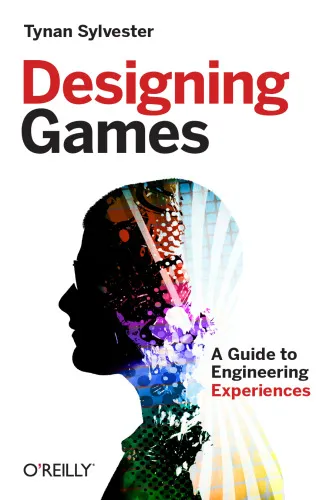Designing games: a guide to engineering experiences
4.6
Reviews from our users

You Can Ask your questions from this book's AI after Login
Each download or ask from book AI costs 2 points. To earn more free points, please visit the Points Guide Page and complete some valuable actions.Analytical Summary
“Designing games: a guide to engineering experiences” presents a meticulous, behind-the-scenes exploration of how interactive systems are conceived, structured, and refined to evoke rich emotional and cognitive responses from players. Written for practitioners and scholars alike, it bridges the gap between abstract design theory and the practical realities of building engaging gameplay.
The book positions game design as more than a technical assembly of mechanics – it is framed as the purposeful engineering of human experiences. By unpacking psychological principles, decision-making patterns, and immersion techniques, the author enables readers to not just design functioning games, but to curate the depth, pacing, and resonance that make them memorable. This analytical perspective makes “Designing games: a guide to engineering experiences” a valued reference for those working at the intersection of art, science, and engineering.
Information about specific publication year and awards is unavailable, as no reliable public source confirms these details. This omission underscores the book’s emphasis on timeless design wisdom over transient accolades, making it equally relevant to both contemporary and future game creation efforts.
Key Takeaways
From nuanced player psychology to the nuts and bolts of system design, readers will come away with actionable insights directly applicable to game development projects, academic research, or teaching curricula.
First, the book reinforces that designing interactive experiences requires empathy—understanding the player’s mindset, motivations, and contextual expectations.
Second, it demonstrates how pacing and flow operate as critical scaffolds for engagement. Presenting challenges at the right intensity leads to smoother player progression and satisfaction.
Third, it outlines practical methods for prototyping, iterating, and harnessing playtesting feedback, ensuring that design is informed by actual player interaction rather than only theoretical appeal.
Fourth, the text advocates for modular thinking—creating systems that can evolve or adapt over time without compromising the original vision.
Lastly, it emphasizes that engineering experiences is not about manipulation, but about crafting honest, resonant connections through meaningful choices.
Memorable Quotes
Games are engines of experience, not just bundles of features.Unknown
Design is the act of shaping the player’s journey through intentional choices.Unknown
The core of interactive design lies in empathy for the player’s moment-to-moment reality.Unknown
Why This Book Matters
In an age of rapidly evolving gaming technologies, “Designing games: a guide to engineering experiences” remains deeply relevant because it focuses on universal design principles rather than fleeting trends.
Academics will appreciate its theoretical rigor and structured methodologies; professionals and indie developers will benefit from its real-world applicability. By framing game design as the systematic crafting of experiences, it encourages a more human-centric approach that transcends platforms and genres.
Moreover, it speaks to a global audience by emphasizing adaptable concepts—whether a reader is developing tabletop games, VR simulations, or mobile apps. This adaptability reinforces the book’s position as not just a guide, but a foundational resource in interactive media studies.
Inspiring Conclusion
“Designing games: a guide to engineering experiences” stands as a testament to the idea that games are deliberate journeys, not accidental diversions. It bridges the artistry of storytelling with the precision of systems thinking to inspire creators at every level.
Whether you are an academic eager to expand scholarly discourse or a professional striving to refine your design process, this book offers both clarity and inspiration. Its lessons extend beyond the gaming sphere into any domain where human engagement and decision-making matter.
Read “Designing games: a guide to engineering experiences,” share its core concepts with colleagues, and discuss them to push the boundaries of interactive design. In doing so, you will participate in a larger conversation about how to craft experiences that resonate deeply, stand the test of time, and genuinely matter to the people who live them.
Free Direct Download
You Can Download this book after Login
Accessing books through legal platforms and public libraries not only supports the rights of authors and publishers but also contributes to the sustainability of reading culture. Before downloading, please take a moment to consider these options.
Find this book on other platforms:
WorldCat helps you find books in libraries worldwide.
See ratings, reviews, and discussions on Goodreads.
Find and buy rare or used books on AbeBooks.
1026
بازدید4.6
امتیاز50
نظر98%
رضایتReviews:
4.6
Based on 0 users review
"کیفیت چاپ عالی بود، خیلی راضیام"
Questions & Answers
Ask questions about this book or help others by answering
No questions yet. Be the first to ask!


